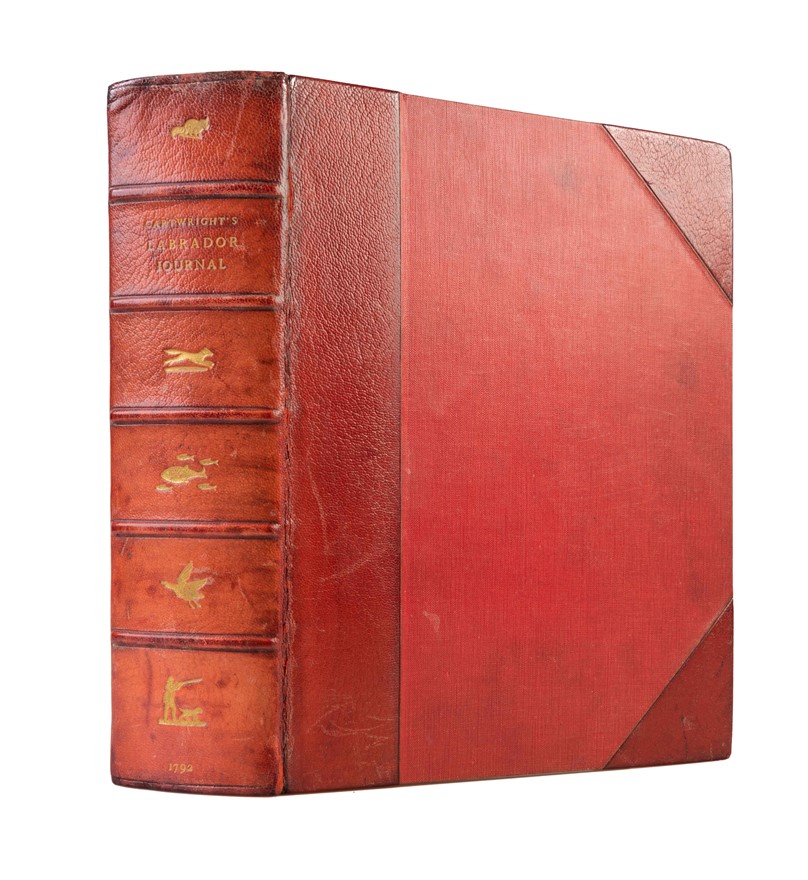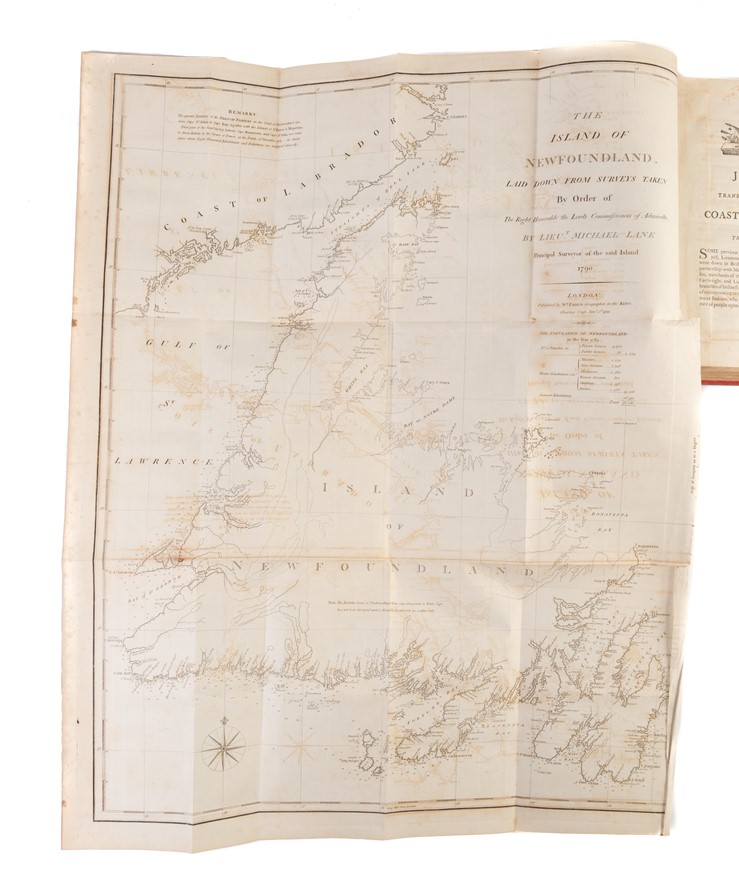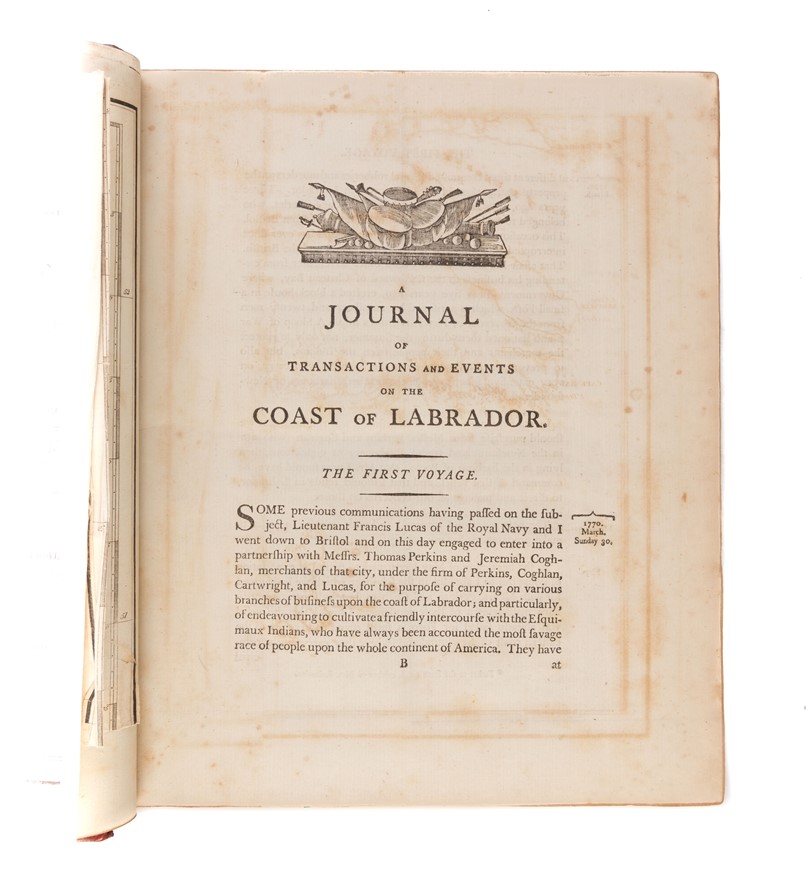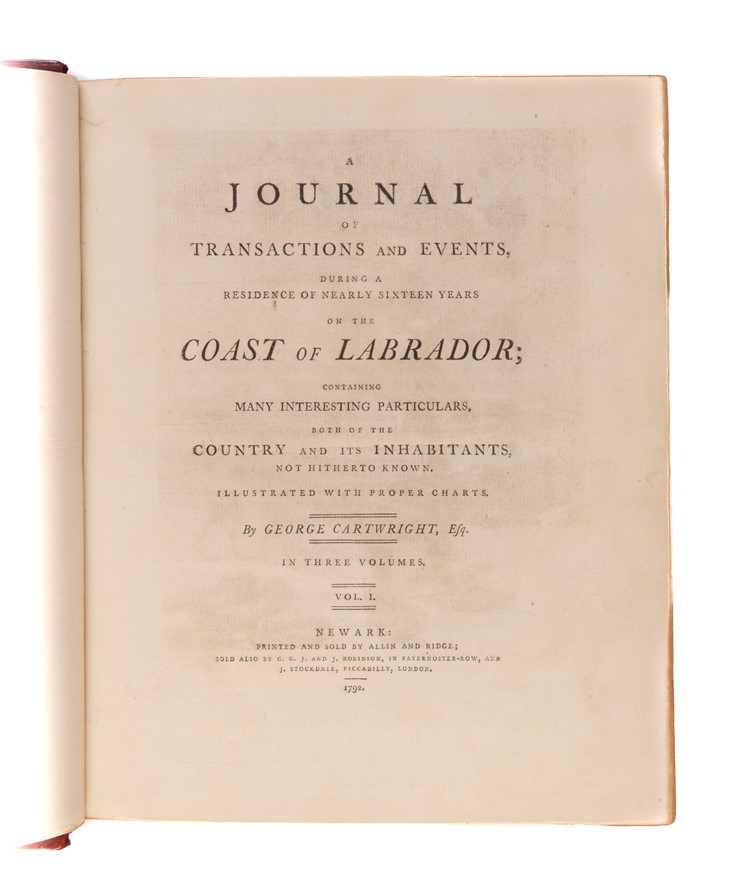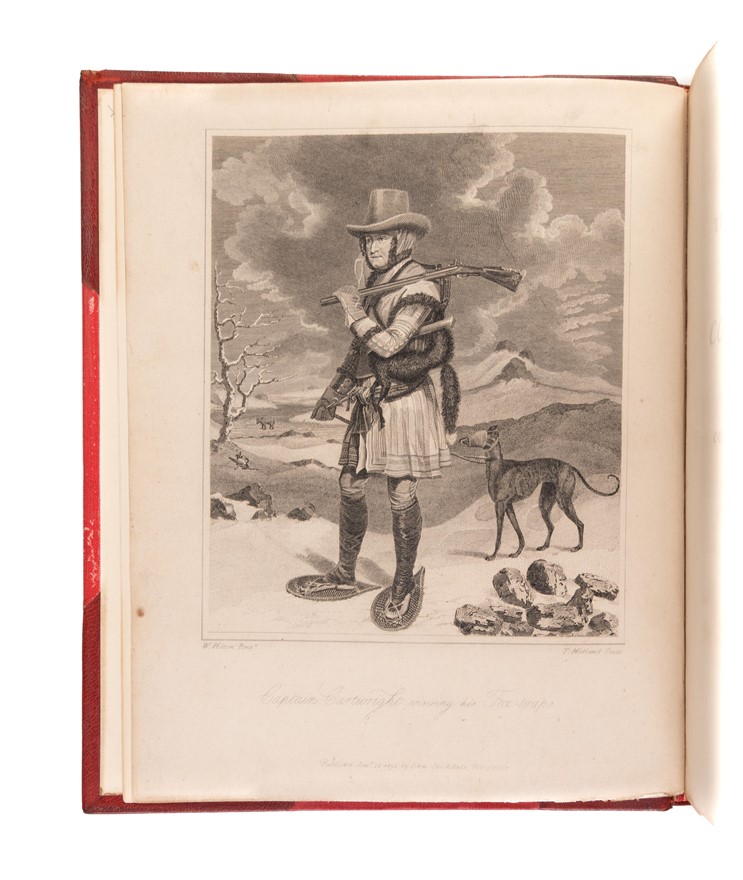A Journal of Transactions and Events During a Residence of Nearly Sixteen Years on the Coast of Labrador; Containing Many Interesting Particulars, Both of the Country and its Inhabitants, not Hitherto Known.
CARTWRIGHT George (1792.)
£6750.00 [First Edition]
Please contact us in advance if you would like to view this book at our Curzon Street shop.
First edition. Three volumes bound in one. Engraved portrait frontispiece of the author, and two engraved folding maps on three sheets. Thick quarto. Modern three-quarter red morocco and cloth, spine gilt. Boards lightly soiled. Light toning and foxing, small tear to inner margin of first map. 6pp. list of subscribers. Very good. Newark, Printed and sold by Allin and Ridge
George Cartwright first visited the Americas in the spring of 1766, when his brother John was first lieutenant of the Guernsey, flagship of Commodore Hugh Palliser. Cartwright sailed with the governor-designate to Newfoundland, where he spent a season cruising along the northeast coast. He returned in the spring of 1768 and took part in an expedition to the interior of Newfoundland to establish friendly relations with the Beothuks at Red Indian Lake. Cartwright's army career was foundering, so he determined to set up as a trader and entrepreneur in Labrador, and in 1770 he went on half pay.
Raids by the Americans, competition between the English and French fishermen and between the different English merchant houses, along with the hostility between the natives and Europeans, all made for an unstable business atmosphere during Cartwright's time in Labrador and Newfoundland. None of this was helped by the political problems caused by the rival authorities of Quebec and Newfoundland. The scene of his operations from 1770 to 1786 was the stretch of coastline between Cape Charles, where he occupied Nicholas Darby's old site, and Hamilton Inlet. From the stations he established he engaged with his servants and sharemen in the fisheries for cod, salmon, and seals, and the trade in furs. The present work gives a fascinating insight into the business life of the region.
But this work offers much else besides: a detailed record of the seasons with fine meteorological and natural history observations as well as extensive notes on the numerous hunting expeditions that Cartwright undertook. "The journal is, above all, testimony to a persistent, curious, and resourceful mind. In his relations with the native peoples of Labrador, especially the Inuit, Cartwright displayed an honesty which led to mutual trust. In 1772 he took a family of five Inuit to England, where they created considerable interest, meeting with the King, members of the Royal Society including Joseph Banks, and James Boswell, who reported to a skeptical Samuel Johnson his ability to communicate with them by sign language.... What has only recently been properly recognized, however, is the interest of Cartwright not only in the Inuit language and its study, but also in making himself a glossarist of 18th-century Newfoundland English; and he was a close student of and perhaps contributor to the work of such scientific contemporaries as Banks, Thomas Pennant, and Daniel Carl Solander. Of his sole essay as a poet, 'Labrador: a poetical epistle' (composed in 1784 [and bound at the back of the final volume of the present work]), Cartwright himself warned the reader: 'Tho I have often slept whole nights on mountains as high as that of famed Parnassus, yet, never having taken a nap on its sacred summit, it cannot be expected, that I should have awoke a Poet.' Yet less interesting verses have attracted the industrious attention of Canadian literary historians, and among writings from the New World a more singular 18th-century document than the journal itself is hard to find" (DCB).
Robert Southey, who met Cartwright in 1791 and read this book in 1793, subsequently wrote that the author "had strength and perseverance charactered in every muscle.... The annals of his campaigns among the foxes and beavers interested me far more than ever did the exploits of Marlbro [sic] or Frederic; besides, I saw plain truth and the heart in Cartwright's book and in what history could I look for this?"
There is some bibliographical confusion over the collation of the maps, which are after surveys of the coasts of Newfoundland and Labrador by Lane and are engraved by Faden: the work is complete with two maps, with one of the maps printed on two sheets and bound with the upper sheet in the second volume and the lower sheet in the third volume (and therefore sometimes incorrectly described as three maps).
Brunet, I:1606. Gagnon, I:703. Lande, 106. Matthews, 226. Morgan, p.64. JCB II:3516. Sabin, 11150 (incorrect collation). TPL, 586. Vlach, 138.
Stock Code: 224058
